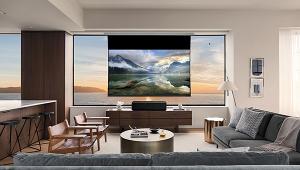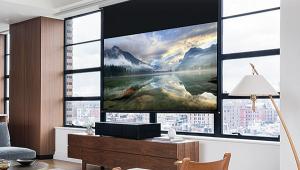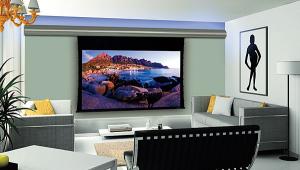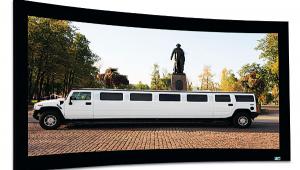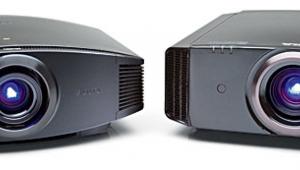The Wonderful World of Projection Page 2
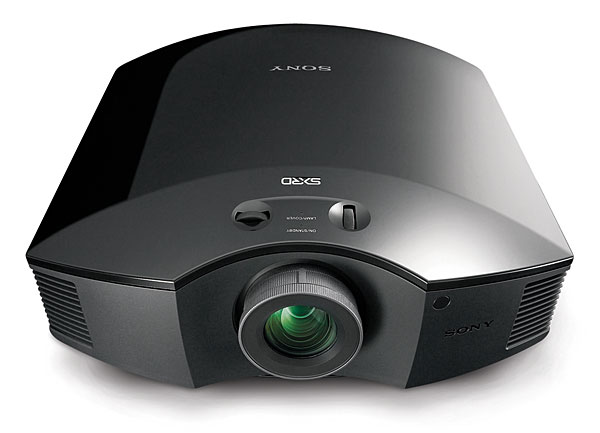
One feature that more expensive projectors almost always have over their cheaper counterparts is lower fan noise. All projectors make some noise, and the cheaper they are, generally, the louder they are. You just can’t muffle the noise of a high-speed fan in a case the size of a hardcover book. This is one of the main reasons mid- and high-end projectors tend to be bigger: to better squash the sound.
Fields of Features
Even after you’ve sorted the chips and prices and identified the best-performing models in your range, there are additional features to consider. While none should
be a reason to get a projector in and of themselves, they might be that little extra that helps you pick one great-looking projector over another.
Lens memory is a great feature. I have a 2.35:1 screen, which is roughly the ultra-wide aspect ratio of most big Hollywood movies. I use the center of this screen for all content with a 16:9 aspect ratio (TV shows, gaming), and then zoom the projector out to fill the full screen. This is quick and simple. PJs with lens memories will remember these different settings (zoomed out and zoomed in) and recall them at the press of a button. (Another way to do this is with an anamorphic lens, which adds cost but improves brightness and apparent resolution. If you plan to go that route, make sure the projector you select offers the special picture mode to accommodate the lens.)
Speaking of lens movement, a fully adjustable lens is something usually only found in mid- and high-end projectors. This lets you put the projector where you want (within reason) and adjust the lens to match your screen. With a cheaper projector, you’re much more limited in terms of placement, with smaller zoom ranges and little, if any, horizontal or vertical lens shift.
The Caves of Despair
As awesome as projectors are, they’re not perfect. In some ways, they’re a lot harder to live with than a TV. As I mentioned, I’ve had
a projector as my only TV for over a decade, and I still can’t outright recommend it
for everyone.
The first issue is ambient light. In reality, you can’t have much (if any). The projector creates the light, but it’s the screen that reflects it so you can see it. That same screen also reflects any light in the room. So light from any source (lamps, overhead lighting, sunlight) will wash out the image. Modern projectors are very bright compared with those from even just a few years ago; but you could have the ultimate retina-searing flamethrower of a projector, and it still can’t compete with a $10 Ikea lamp situated in the wrong place. Projectors can’t “project” black; they can merely not put light on that part of the screen (and some can barely manage that). That cheap lamp is uniformly throwing light across the screen, raising the black level, reducing the visible contrast ratio, and likely hiding shadow detail. How much of the image is lost goes up with the amount of ambient light.
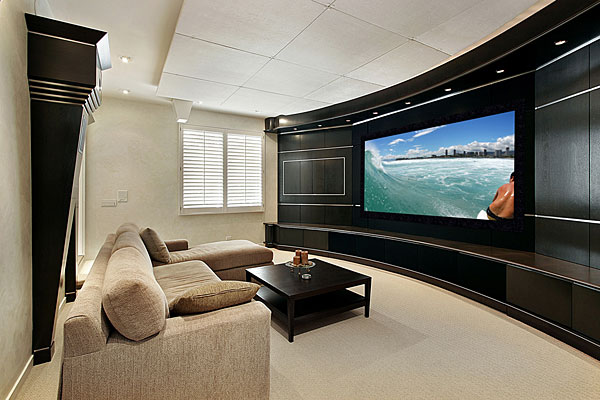
The easiest way to deal with this is some heavy curtains for daytime viewing. Personally, I don’t watch a lot of TV during the day; if you don’t either, then some curtains can lower the light enough for a decent image. If you want to do critical viewing during the day you’ll need serious blackout curtains (depending on your room, of course). If you watch sportsball during the day, there isn’t much shadow detail to worry about, so as long as the projector is bright enough and you’ve darkened the room a bit, you’ll probably be fine.
Again, this is hard to generalize as I can’t see your house from here. Basically, just keep all of the above in mind.
The other way to view a projector in lit rooms is with an ambient-light-rejecting screen. These help, but they can’t work magic. In my testing, they certainly make the image more viewable in high ambient light than a “normal” screen, but be skeptical of marketing that promises the world. All projectors create their best image in a completely dark room, so work backwards from there with what you’re looking for in terms of performance with ambient light.
Another aspect that makes projectors a bit persnickety is the need to replace their lamps. The pulsing heart of nearly every projector is a lamp—essentially, a crazy-bright light bulb. These are a wear part. Every hour of use is one hour closer to it going poof, or at least going beyond its useful life. On the low side, this is around 3,000 hours; on the high side, over 6,000—and this is to its “half brightness” point. That is, the lamp may still work beyond these hours, but the projector will not look its best because it will be much dimmer than it was when it was new. Picky viewers may even want to replace the lamp much sooner. How long a lamp will last depends a lot on the projector and how you use it. The adage of “twice as bright, half as long” is perfect here. Run the PJ in its bright mode, and the lamp won’t last as long compared to the eco or low lamp mode. Also, if you turn the projector on and off a lot, that will age the lamp faster than if you watch it for long stretches.
Lamp costs vary, but they’re usually around a few hundred dollars. So if you watch your projector for four hours a day, and you figure 4,000 hours on the lamp, that’s about three years per lamp. So maybe $100 a year, give or take. Some people can’t handle this kind of re-occurring cost, even if the PJ and multiple lamps is less than the price of a new TV. If you’re one of those people, well, I can’t help you. For most people, though, enjoying a cinema-sized screen for everything they watch every day is worth these pennies per day. To each his own.
As I mentioned earlier, there’s a tiny subset of the projector market that uses LEDs and/or lasers as a light source instead of lamps. These sources last the life of the projector. I’ve tested a few of these, and they range from awesome to atrocious. One really high-end LED projector I tested had some of the best color I’ve seen from a projector. Some mid- and low-end LED and laser projectors were rubbish. Even the high-end LED, while beautiful, was significantly dimmer than lamp-based models (that cost a fraction of the price). So generally, they’re not there yet. Will we see more, brighter, and more affordable LED and laser projectors in the future? I hope so.
The Universe of Big Pictures
Projectors are awesome: a massive image, often for less than the price of even a mid-sized television. Performance is all over the map, perhaps even more so than with TVs. It takes a bit of research to find the best PJ at a given price, but the best performers put out a breathtaking image. A breathtaking and huge image. I, for one, could never go back to a “normal” TV ever again.
Will you feel the same way?
